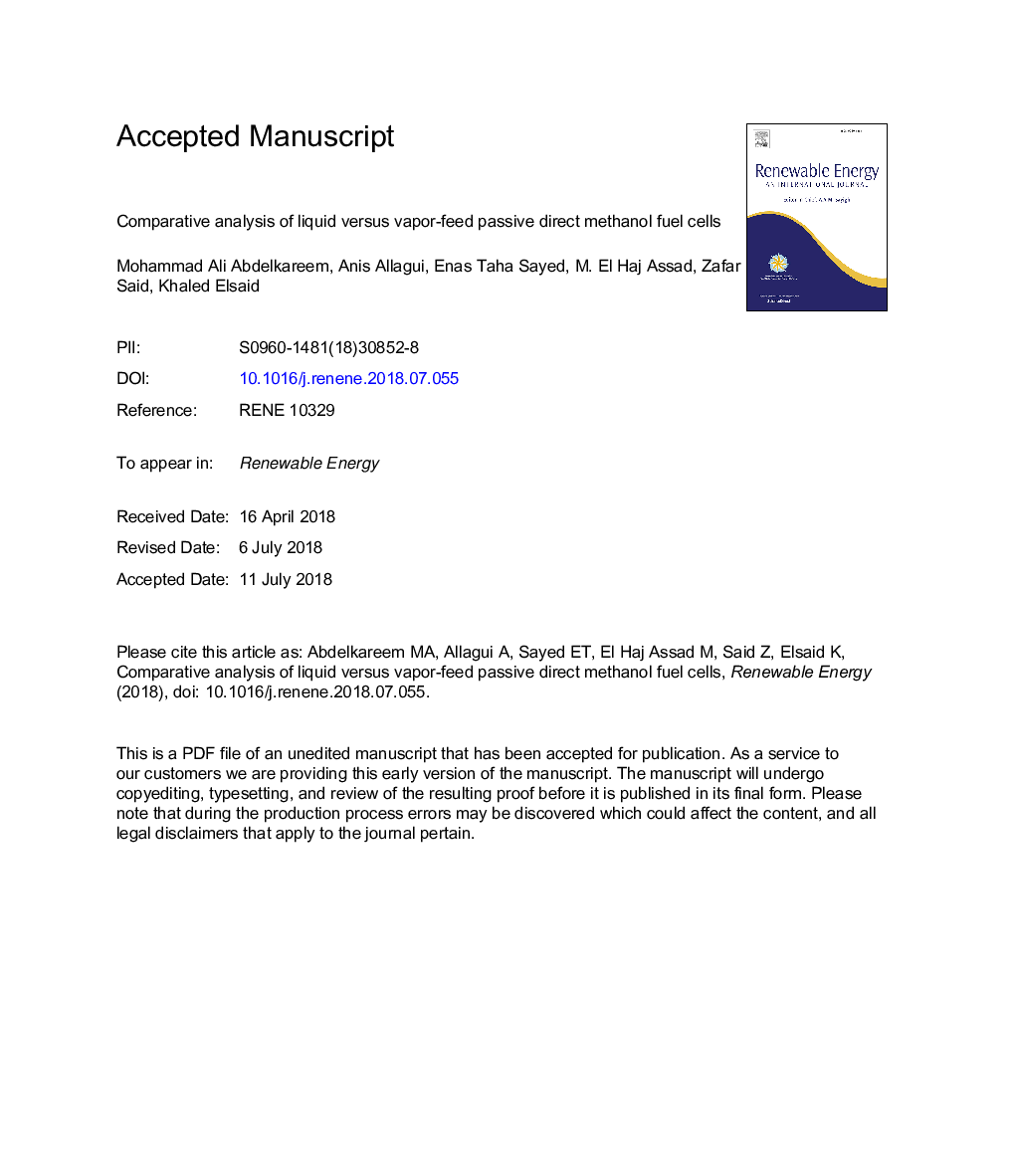| کد مقاله | کد نشریه | سال انتشار | مقاله انگلیسی | نسخه تمام متن |
|---|---|---|---|---|
| 6763595 | 1431571 | 2019 | 52 صفحه PDF | دانلود رایگان |
عنوان انگلیسی مقاله ISI
Comparative analysis of liquid versus vapor-feed passive direct methanol fuel cells
ترجمه فارسی عنوان
تجزیه و تحلیل تطبیقی سلول های سوختی مستقیم متانول مایع منفرد در مقابل بخار
دانلود مقاله + سفارش ترجمه
دانلود مقاله ISI انگلیسی
رایگان برای ایرانیان
کلمات کلیدی
موضوعات مرتبط
مهندسی و علوم پایه
مهندسی انرژی
انرژی های تجدید پذیر، توسعه پایدار و محیط زیست
چکیده انگلیسی
Passive direct methanol fuel cells (pDMFCs) have several advantages such as high theoretical energy density, quick refueling and environmentally safe. However, methanol crossover (MCO) is one of the major challenges to the commercialization of pDMFCs. Significant progress has been achieved over the last few years in controlling MCO through different approaches, such as applying porous plate, pervaporative membranes, and so forth. These methods are mainly based on supplying methanol to the anode surface in vapor phase. Thus, two types of pDMFCs are available: low methanol concentration (liquid-feed pDMFC) and high methanol concentration (vapor-feed pDMFC). The methanol and water transports are different in these two types of cells. Moreover, under low operating temperature and at high methanol concentration (i.e., above 50â¯mol%) in the vapor-feed pDMFC, the possibility for chemical intermediate to form increases. Such intermediates not only decrease the efficiency of the cell but are also harmful for the health and the environment. The aim of this review is to highlight and clarify the differences between liquid and vapor-feed pDMFCs. Moreover, the mechanism of intermediates formation in vapor-feed pDMFC and the different approaches to controlling it are presented. Finally, we present recommendations for designing safe and high performance pDMFCs.
ناشر
Database: Elsevier - ScienceDirect (ساینس دایرکت)
Journal: Renewable Energy - Volume 131, February 2019, Pages 563-584
Journal: Renewable Energy - Volume 131, February 2019, Pages 563-584
نویسندگان
Mohammad Ali Abdelkareem, Anis Allagui, Enas Taha Sayed, M. El Haj Assad, Zafar Said, Khaled Elsaid,
